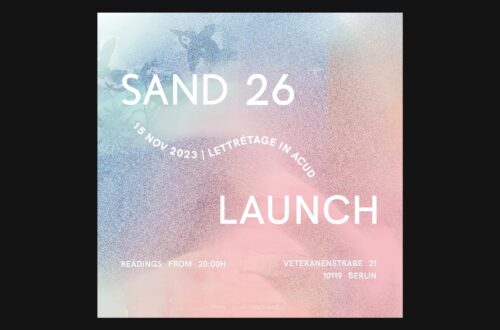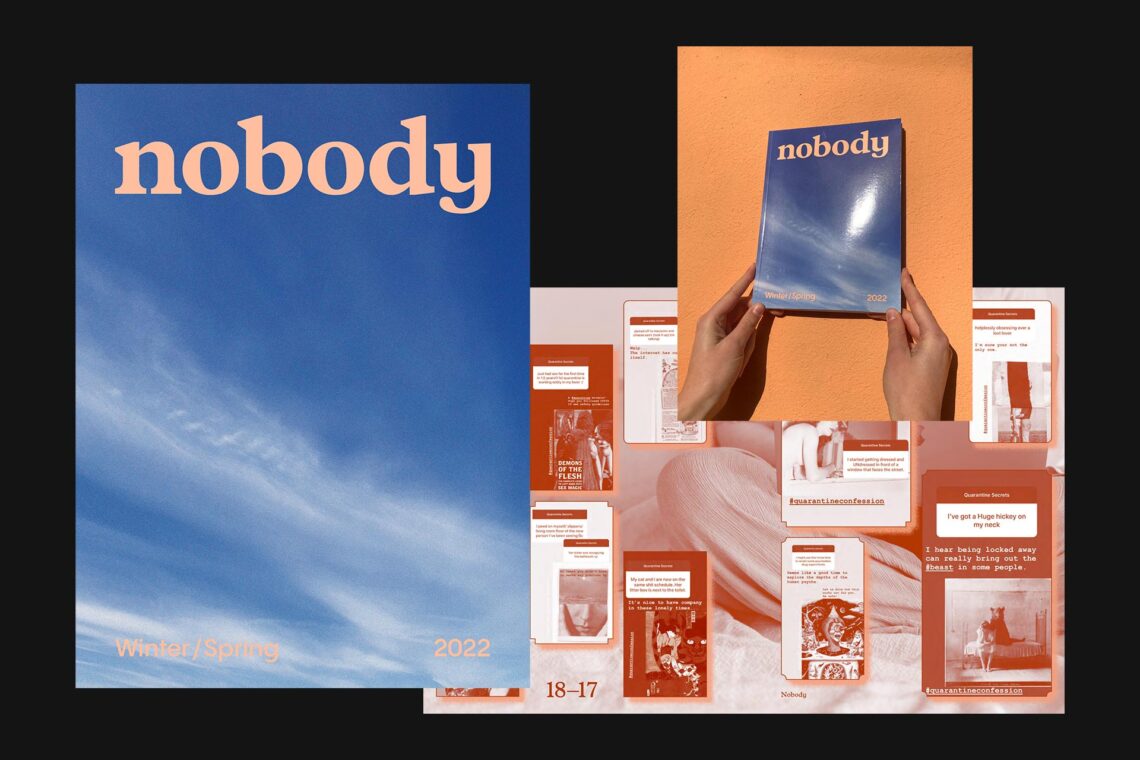
Berlin’s Nobody magazine issue one finds beauty in the everyday
Nobody is a Berlin-based biannual print magazine about people, their stories, places, and much more. Their press release notes, “we reach beyond the headlines to publish reported longform writing, photo series, illustrated memoir, and other experiments in voice.” Nobody issue one pierces the veil of the everyday and invites us into the world of the undiscovered, unheard and the unrelenting. Created by two writers (and best friends) Sami and Tessa, Nobody derives its mission from becoming “frustrated with the homogenization and “clickbatey” nature of mainstream media,” they write. “[This] has created an environment where creativity and experimentation are almost impossible.”
Launched in March 2022, Nobody is a timeless reminder of the power of observation, the passion of collecting and the curiosity within everyday discoveries – from letters found in a junk shop dating from 1941, to gentrification in Sulukule, Istanbul. Its diverse content ranges from photojournalism to expansive literary creations. “This magazine was dreamed up as a space for other creators to step outside of these confines,” the editors write. “As well as for readers seeking more vulnerability, playfulness, and beauty in their lives—and want to find it (mostly) offline.”
With the launch of issue one now firmly behind us, I interviewed co-editor and founder Tessa Love about the creation and curation of issue one. You can read it below.
Congratulations on the release of the first issue of Nobody. How do you feel the reception has been so far?
Thank you so much. 🙂 We’ve both been very surprised and very touched at how well issue one has been received. We went into this knowing that getting our mag out into the world was going to be hard – especially as first-time, independent publishers. And there is no doubt that it was even more challenging – and at times, discouraging – than we could have imagined. But it’s all been worth it to see people reading, buying, and loving issue one.
When did work begin on the first issue, and how did Nobody emerge?
Nobody came into being in the back of a smoky Berlin bar in the early winter of 2018. We’re both writers, and at the time, we were both feeling extremely frustrated at how disinterested most outlets were in featuring the kinds of stories we love to read (and occasionally attempt to write ourselves). Although both of us had long coveted dreams of one day making a mag of our own, neither of us had ever dared to try. But at the time – with some liquid courage flowing through our veins – it suddenly felt like something we could do.
We came up with the name for the mag that night – which also helped frame the project in our minds – but after that, work on the project moved at a snail’s pace, as we attempted to get our footing, and manoeuvre around our own busy work schedules.
"We really want the stories you read in Nobody to feel like stories you might be told by a stranger at a party; by an eccentric aunt or uncle; by your best friend."
Tessa Love, ‘Nobody’ Founder and editor
Can you introduce us to the team behind the mag?
We (Sami Emory and Tessa Love) are the founders of the mag, and its editors. We’re both from California, though we both live – and met – in Berlin. Sami likes to write stories about unusual human dramas (she’s written about the family tragedy of the world’s best freediver, why Germans love their forests so much, bogs) and Tessa tends to write about somewhat ephemeral phenomena, whether it’s the night sky, the last vestiges of peyote, or personal histories of wildfire.
(In actuality, we really spend the majority of our time as corporate copywriters/editors – to pay the bills as well as to make this mag independently of ads or funding.)
Issue one’s entire visual language, meanwhile, is the work of the incredible Eva Gonçalves, who we were so lucky to work with on this project. Eva has such an eye for these kinds of projects, and worked so hard to ensure that she captured the essence of the mag as a whole, as well as the character of each individual piece. There’s no Nobody without Eva, and all credit goes to her for how great the mag looks.
For issue one, we also worked with a wonderful copywriter (and novelist!) Redfern Jon Berret. Mariana Romao did our photo-editing, and our illustrations were done by Ludi Leiva.
With the idea of Nobody becoming a tool (of sorts) for offline escapism from mainstream clickbait, do you think these pieces offer respite for the reader?
We hope so! We tried to choose pieces that felt like little, intimate glimpses into the lives of others. To both make people feel things, and also encourage our readers to slow down a bit and maybe even take a moment to appreciate the slower, softer things in their own lives too.
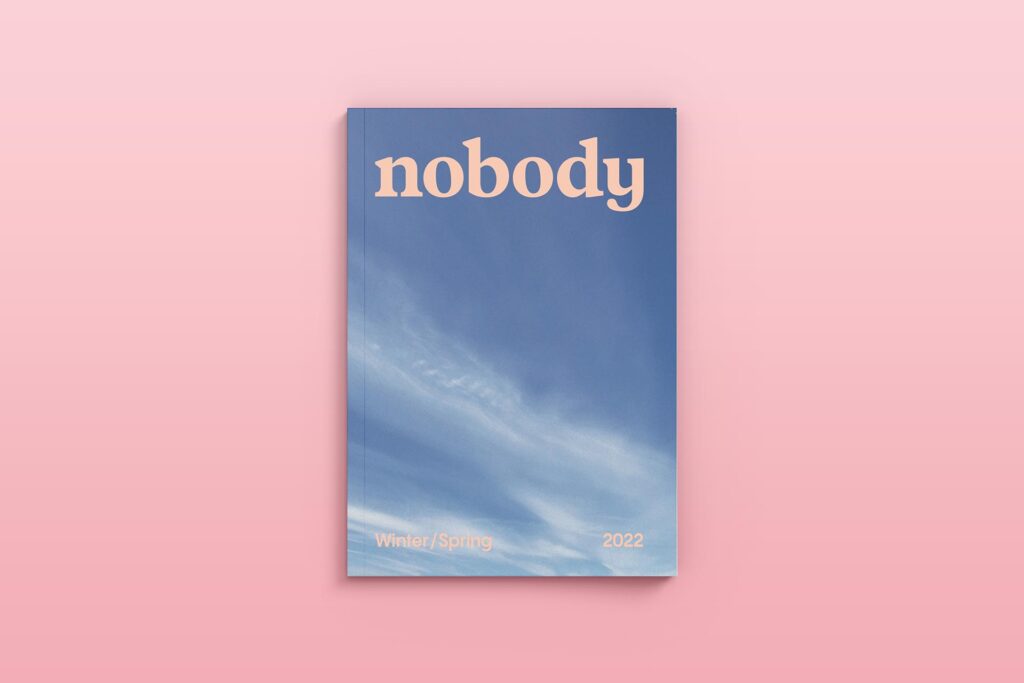
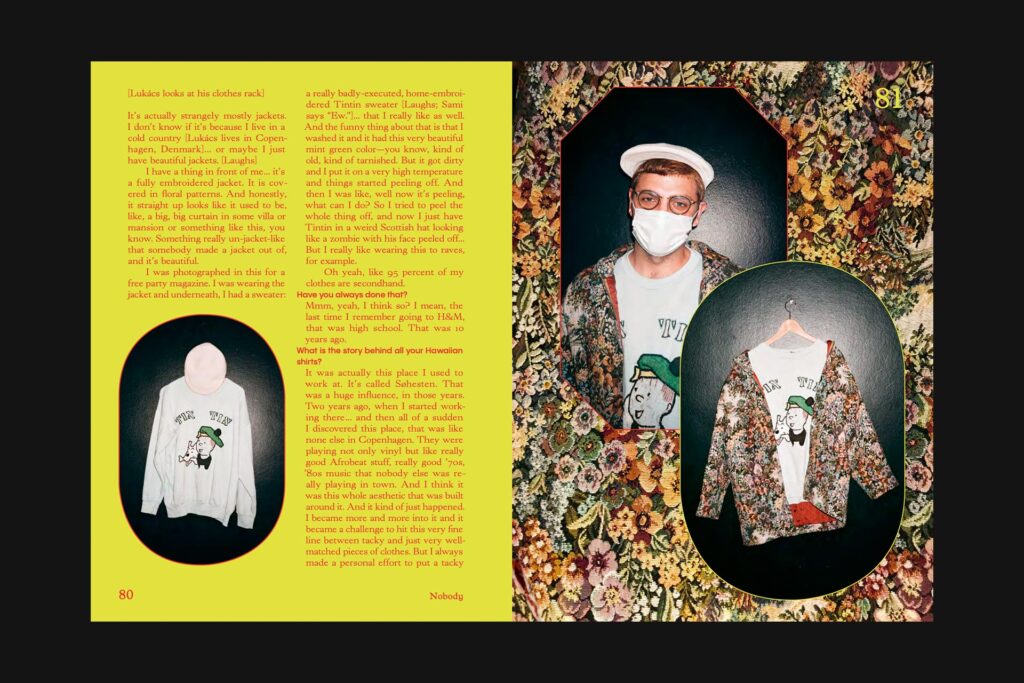
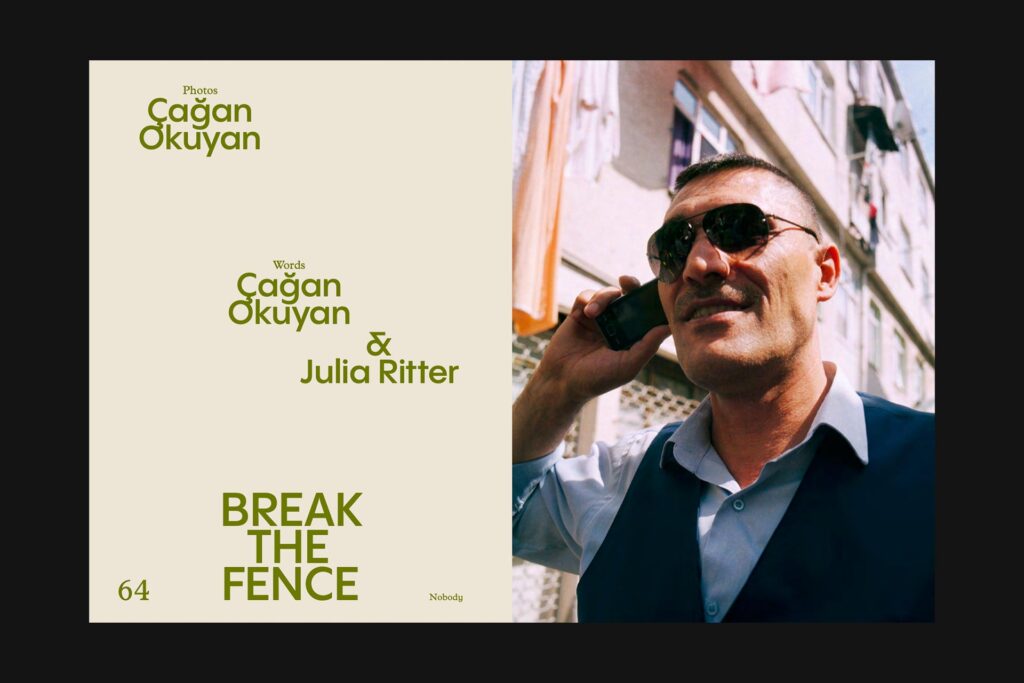
I felt that the same stories could be told around the dinner table, where most stories of the day are discussed. Everyone has a story, don’t they?
They really do. There are people who are born storytellers but sometimes, it’s the people who aren’t who have the most amazing things to share. And when that’s the case, it’s just about giving them the space to have fun with their thoughts and experiences, in a setting free of judgment. One of our favorite pieces – Quarantine Confessions – is proof of this.
Working with a big pool of contributors on the theme of ‘failure’ must’ve given you a variety of stories to curate. Can you describe the process of narrowing them down?
For issue one, we actually largely tapped our own communities for contributions. A few pieces that came to us were unsolicited, but since at the time Nobody was very much an unproven concept and our resources were limited, it was challenging to convince unknown contributors that we would handle their work with care. Luckily, though, we had cool friends that were already working on projects that fit really well with our theme! Quarantine Confessions, for instance, was a personal project of Shimeko Franklin purely for her Instagram audience. But we fell in love with it and thought it would make a really interesting magazine piece. We went on like this for a while, collecting friends’ and strangers’ projects until we had enough to create a complete magazine.
Each piece has a distinctive style including accompanying illustrations or imagery. Can you run us through the art direction from the star (featured on the back cover) to the collaboration with the illustrators?
Our designer and art director is the talented and amazing Eva Gonçalves, who gets all credit for how amazing this issue looks. We definitely had some ideas about the kind of design we wanted going into this and as the content developed, but we gave Eva a lot of space to do what she felt was best, which included adding such lovely little touches as the star on the back (which we love). The illustrations were done by Ludi Leiva who is one of the first collaborators we met with early in the process of creating Nobody. For that process, we let Ludi create the illustrations based on the finished essays (and, in the case of Nameless, a photo of the author).
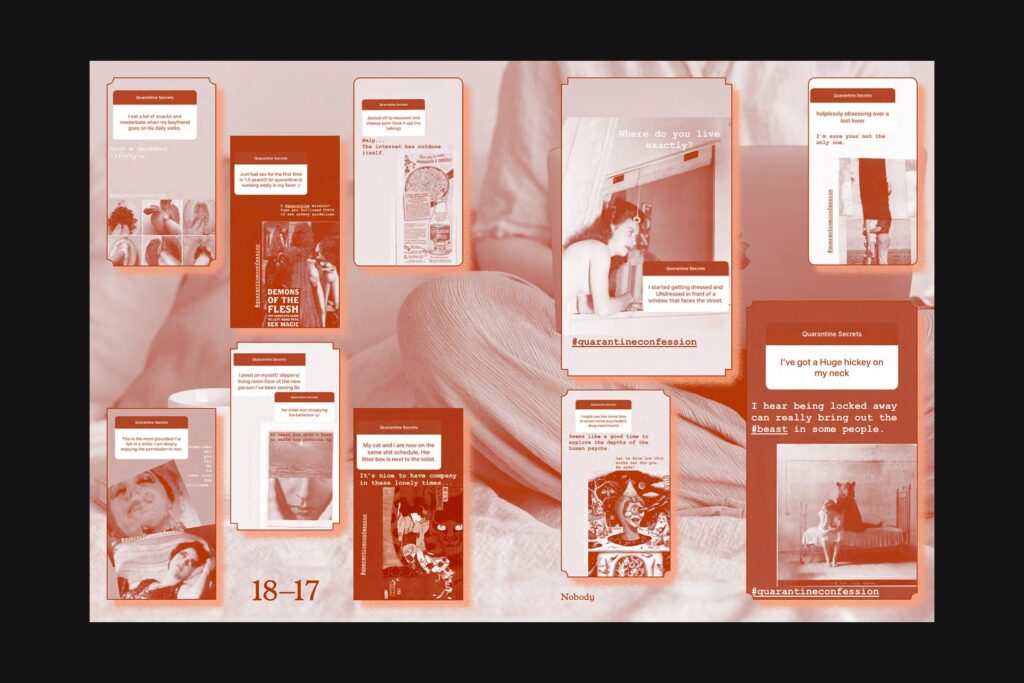
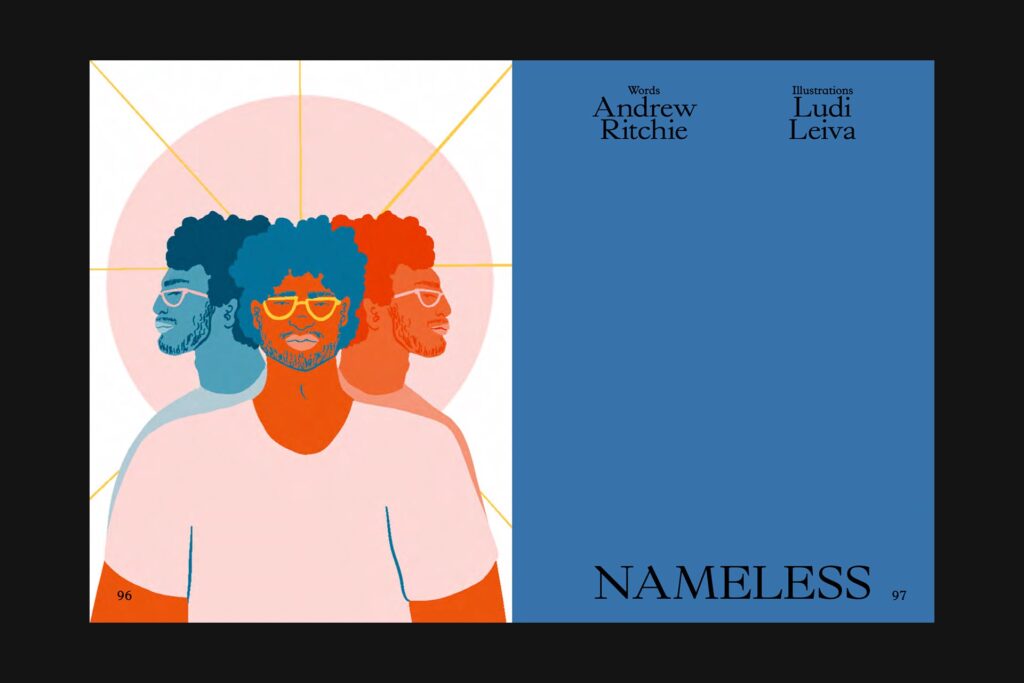
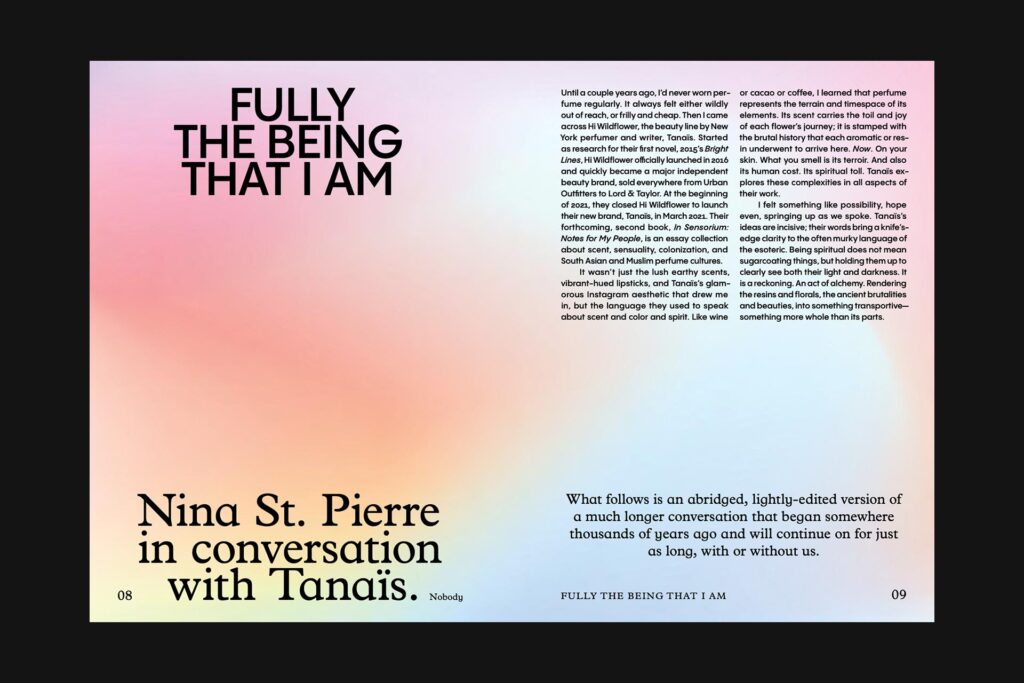
The pandemic has also created a whole new set of stories for a lot of people. Shimeko’s piece about quarantine confessions looked at a safe platform for discussion. Do you have a quarantine confession to add to the mixture?
Ooh, great question. In the spirit of Shimeko’s piece, we’ll keep these confessions semi-anonymous. One of ours would be: I now know more than I ever thought I would about the sex lives of my neighbors. Another would be: I started stealing very minor things from the grocery store just to feel something.
The everyday stories featured in the magazine range from being personal (Eda Yu’s piece), to insights into an area torn apart (‘Break the fence’). Do you feel there is a large sense of community across the issue?
We really want the stories you read in Nobody to feel like stories you might be told by a stranger at a party; by an eccentric aunt or uncle; by your best friend. So in that way – yes! Another of our favorites, the conversation with Lukács, is a perfect example of this. We wanted that piece to feel like the reader had been dropped down into the middle of a conversation between friends.
We hope issue one – and those that follow (fingers crossed!) – are able to dance along the same line, of personal and public experiences.
Nora’s piece on ‘The Lost Resort’ looks at memories of times gone by. Do you think the issue looks at present-day and nostalgia through the same lens?
I think the perspective on nostalgia in this issue naturally varies based on who is telling the story. In Nora’s piece, she both leans into the romanticism of Wildwood’s particular brand of Americana – mainly in terms of its architecture and its aesthetic – while also unpacking the historical implications – and racist past – of that same nostalgia.
There are lots of hidden gems to discover (such as the letters), and lots of stories to be told. ‘Stories about everything else,’ as you say. If people have a story to submit, where can they find you?
Please write us at any time at hello@nobodyzine.com. We’re just now ramping up for issue two – the theme is “Ghost” – so if that speaks to you, we’d love to hear your ideas!
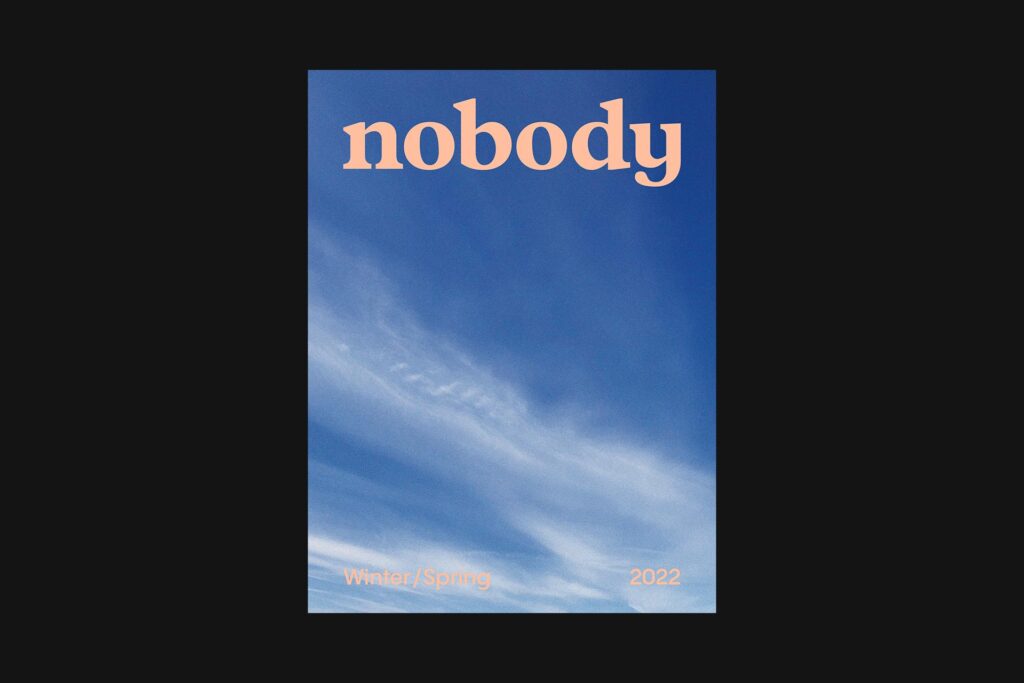
Issue one sees us explore a “loose” theme of ‘Failure’, and although loose, Nobody’s contributors have found a core relatability to their pieces. “[Failure] is both something that is often misunderstood—forced into categories—and something that unites us,” Tessa and Sami write. “After all, we all fail.” But with that final statement, Nobody is in itself the opposite of its debut theme. A triumph in creative writing, diverse photography and uncontainable personality, Nobody leaves you wanting to ask each contributor more; an inquisitive inquiry into the day-to-day. It ignites the curiosity within us all.

Enjoying Overleaf?


You May Also Like
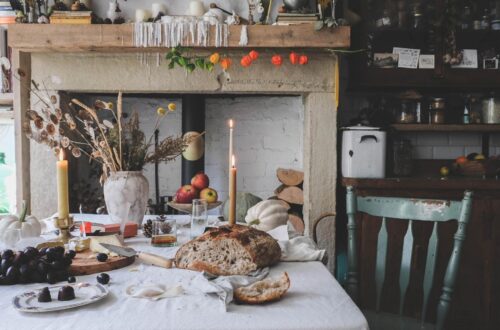
Heiter magazine to host issue two online fundraising event ‘Heiter November’
November 20, 2023
Motor dance journal issue one launches Kickstarter campaign
November 12, 2022